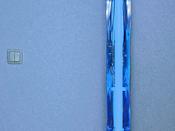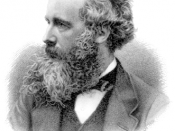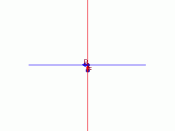Electromagnetic Waves
If you stand in front of a campfire, even though you do not actually touch the flames, something that is emitted from the blazing wood, makes itself felt on your face or hands. Out in the noonday sun, on a summer's day, you get the same sensation of warmth. You know that if you stay out in the sun too long you will get sunburned, possibly painfully. You listen to the radio or television. Something is sent out from the transmitting station. The receiver picks up this something and converts it to the particular program that you hear or see. These are examples of the process called electromagnetic radiation, whereby energy is carried across space. Ordinarily, the energy travels outward from its source, spreading in all directions like the radii of a circle.
The most familiar kind of radiation is visible light, which makes it possible for us to see the world about us.
Long ago, people were puzzled as to just what light was. Some scientists believed in the corpuscular theory, which held that luminous bodies give off tiny particles, or corpuscles, that bounce off objects and are detected when they hit the eye ("Electromagnetic Radiation", 1 ). Others thought light was like the waves formed in a pond when a stone is dropped in it, which travel outward on the surface of the water. If these waves hit a solid obstruction, they are reflected, producing a new series of waves. By itself, neither theory could satisfactorily account for the various properties of light, such as refraction and polarization. In the 20th century, scientists discovered that light radiation can be interpreted in two ways that seem to contradict each other but are actually complementary (2). From one perspective, light consists of electromagnetic waves; from the other, it...


